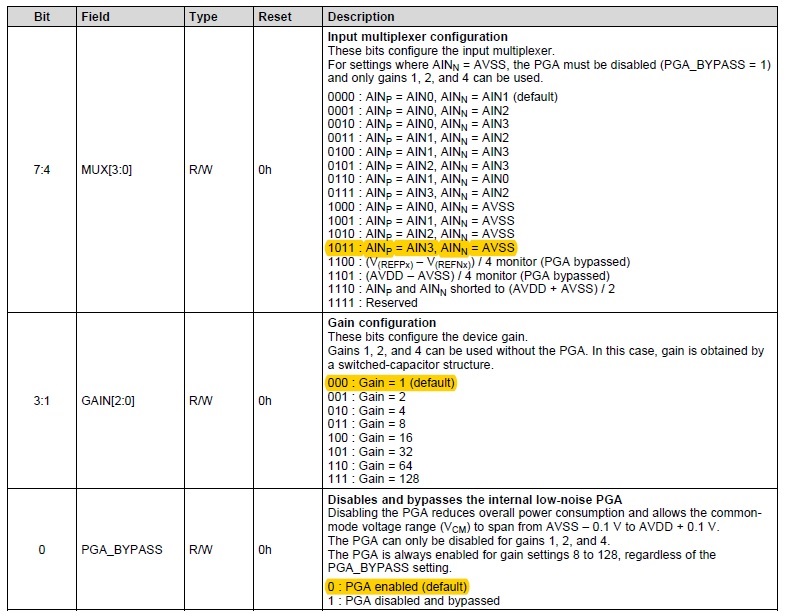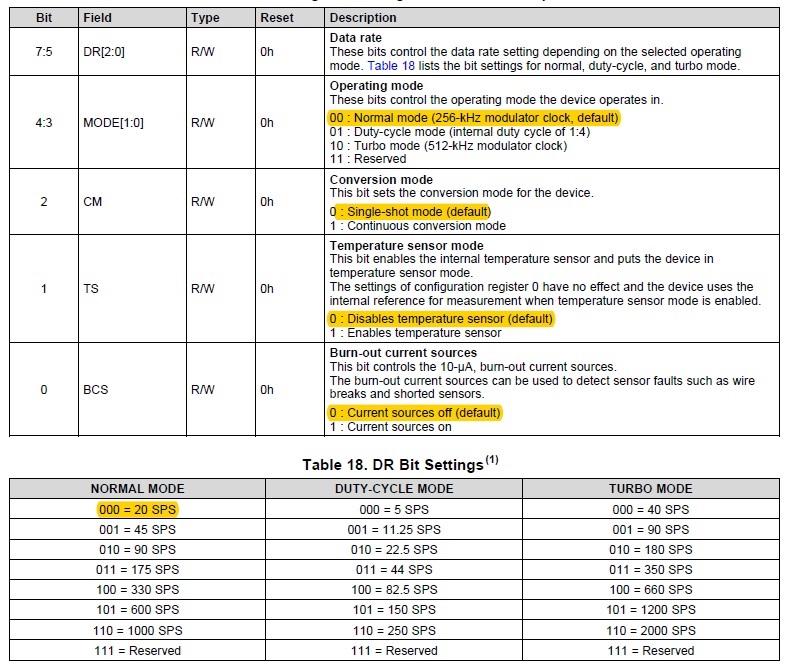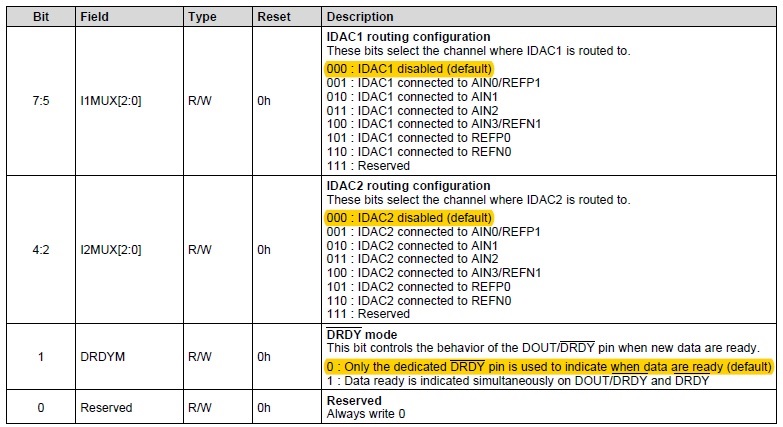Other Parts Discussed in Thread: ADS1220
Hi.
My customer has converting issue.
Please let me know about below question.
Schematic)
-. As shown in the table below, the ADS1120(AIN3) is inputed voltage with a DC source, and reads the adc value. (MCU: using ATmega2560)
-. The measurement voltage was calculated from ADC value and some error (difference) occurred between the input voltage and the measured voltage.
-. Some error may exceed + -0.0005 (see the yellow section).
-. In particular, there may be a large error between 0.820V and 0.984V (see the orange section).
Register Setting)
Refer to below.
Question)
-. Please explain why this happens on the ADS1120 chip and how you can reduce the error to + -0.0005 or less.







